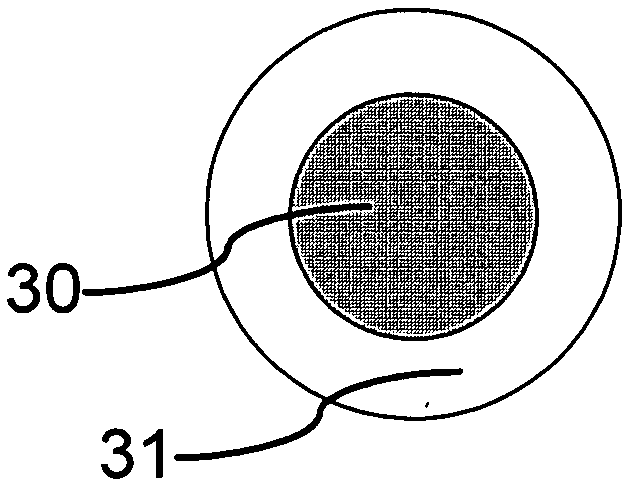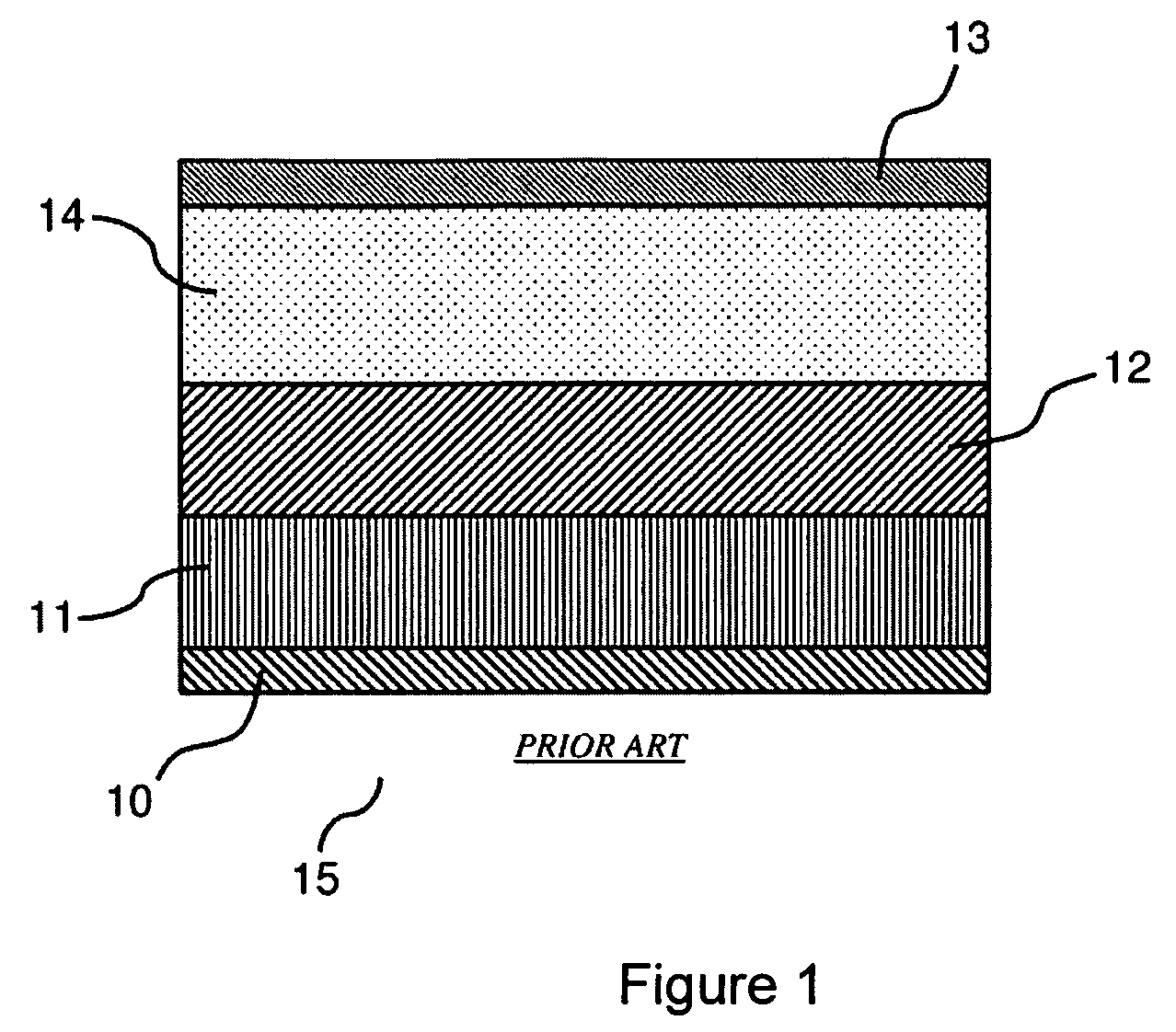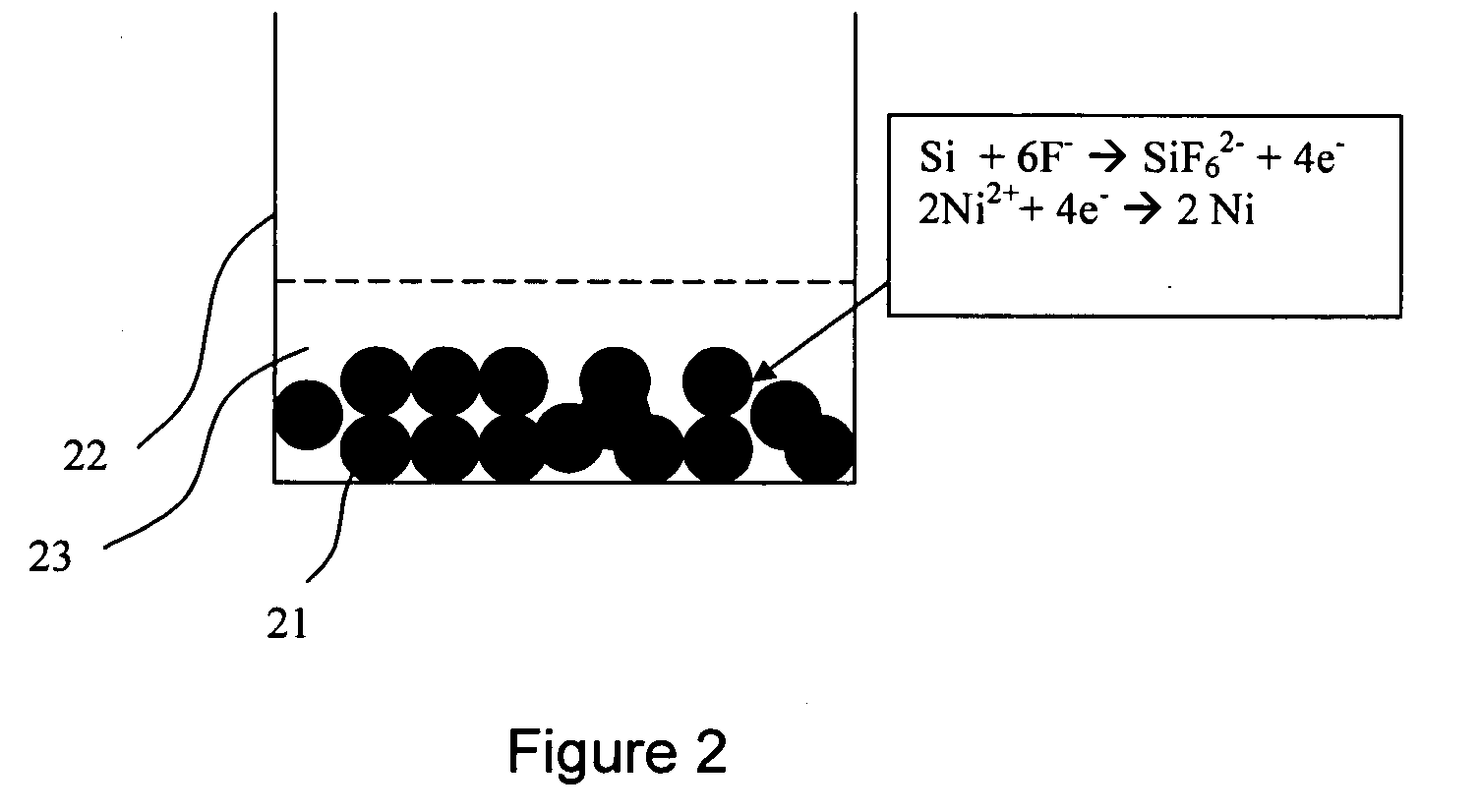Anode material having a uniform metal-semiconductor alloy layer
a technology of metal-semiconductor alloy and anode material, which is applied in the direction of cell components, electrochemical generators, batteries, etc., can solve the problems of reducing the amount of anode material, causing parts of anode material to separate from the anode, and forming cracks in the anode material
- Summary
- Abstract
- Description
- Claims
- Application Information
AI Technical Summary
Benefits of technology
Problems solved by technology
Method used
Image
Examples
example 1
Immersion Nickel Deposition on Particulate Anode Material
[0045]A sample of 2 grams of silicon particulates in powder form (−325 mesh) was immersed for 30 seconds in 50 milliliters of a solution containing 0.1 M NiSO4.6H2O and 5M NH4F. The pH of the solution was maintained at 8.5 and the operating temperature was 85° C. Deposition was done with the powder on top of a filter paper assembled in a Buchner funnel. Vigorous bubbles were observed during deposition indicating the nickel displacement reaction. The solution was drained out through the application of vacuum in the Buchner funnel. The sample was rinsed with DI water for 10 minutes to remove trace salt contamination. The powder was harvested and dried at 80° C. in air for 12 hours. Subsequently, the powder was annealed for 2 hours (including heat and cool time) to a maximum temperature of 550° C. in a H2 / N2 atmosphere to form the silicide.
[0046]The resulting anode material was reversibly cycled upwards of 1200 mAh / g of silicon e...
example 2
Immersion Nickel Deposition on Particulate Anode Material
[0047]A sample of 2 grams of silicon particulates in powder form (−325 mesh) was immersed for 30 seconds in 50 milliliters of a solution containing 0.1 M NiSO4.6H2O and 5M NH4F. The pH of the solution was maintained at 8.5 and the operating temperature was 85° C. Deposition was done with the powder on top of a filter paper assembled in a Buchner funnel. Vigorous bubbles were observed during deposition indicating the nickel displacement reaction. The solution was drained out through the application of vacuum in the Buchner funnel. The sample was rinsed with DI water for 10 minutes to remove trace salt contamination. The powder was harvested and dried at 80° C. in air for 12 hours. Subsequently, the powder was annealed for 2 hours (including heat and cool time) to a maximum temperature of 550° C. in a H2 / N2 atmosphere to form the silicide.
[0048]The powder prepared was immersed in a solution of 10 ml H2SO4+40 milliliters 3% H2O2 ...
example 3
Sintering Mesh of Silicon Particles Coated in Nickel Silicide
[0049]Powder consisting of nickel silicide coated particles prepared according to Example 2 are dispersed in an aqueous solution containing carboxymethylcellulose and coated onto a nickel mesh. The coated mesh is dried to remove water and then heated to 1000° C. in an argon atmosphere to sinter the nickel silicide coated particles to each other and to the nickel mesh. The resultant sintered electrode is used as an anode in a lithium-ion battery.
PUM
| Property | Measurement | Unit |
|---|---|---|
| thickness | aaaaa | aaaaa |
| thickness | aaaaa | aaaaa |
| temperature | aaaaa | aaaaa |
Abstract
Description
Claims
Application Information
 Login to View More
Login to View More - R&D
- Intellectual Property
- Life Sciences
- Materials
- Tech Scout
- Unparalleled Data Quality
- Higher Quality Content
- 60% Fewer Hallucinations
Browse by: Latest US Patents, China's latest patents, Technical Efficacy Thesaurus, Application Domain, Technology Topic, Popular Technical Reports.
© 2025 PatSnap. All rights reserved.Legal|Privacy policy|Modern Slavery Act Transparency Statement|Sitemap|About US| Contact US: help@patsnap.com



